The flag of Tonga stands as a symbol of national pride and identity, embodying the unique characteristics and values of Tonga. Its distinct design reflects Tonga’s sovereign status and cultural heritage, serving as a beacon for its people at home and abroad.
Flag of Tonga

The flag of Tonga, with its distinct white canton set against a vibrant backdrop, features a prominent cross that mirrors the archipelago’s spirit. This layout transcends mere aesthetics to embody this Pacific island nation’s deep-seated cultural and historical narratives.
Each element of the flag is meticulously selected to resonate with the essence of Tongan character, elevating it as a symbol of unity and pride that echoes the country’s geographical distinctiveness and maritime heritage.
Flag of Tonga: Color Palette
The color palette of Tonga’s flag is both striking and meaningful, chosen to convey specific aspects of the nation.
Each hue holds its own significance, contributing to a cohesive visual narrative that resonates with the Tongan people and their heritage. This careful selection of colors enhances the flag’s visual appeal and embeds deeper layers of meaning into the fabric of this national symbol.
Tonga Falg Map
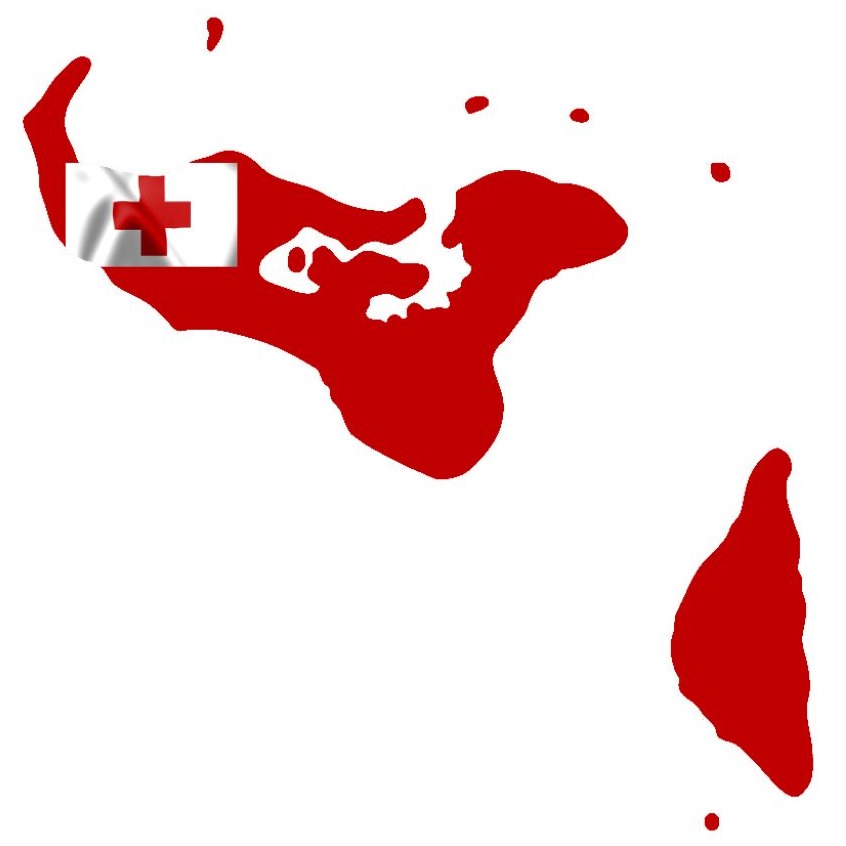
Tonga Flag Emoji: 🇹🇴
Meaning of Each Color
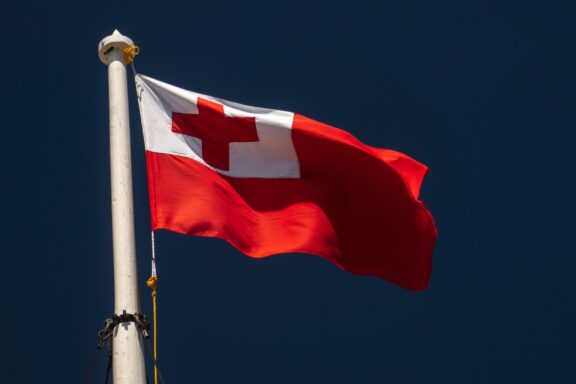
Red
This vibrant color in the flag’s field symbolizes the Blood of Christ, reflecting Tonga’s strong Christian faith.
The use of red is a poignant reminder of the sacrifice and love embodied in the Christian narrative, particularly the Crucifixion, and underscores the nation’s spiritual foundation.
White
The white canton on the flag stands for purity and virtue. This choice of color emphasizes the importance of moral integrity and spiritual clarity within the Tongan community, aligning with Christian values of righteousness and peace.
Cross
The red-couped cross within the white canton is a direct representation of Christianity, which is the predominant religion in Tonga.
This symbol not only signifies the religious faith that permeates Tongan society but also serves as a visual testament to the country’s historical ties and commitment to Christian principles.
Tongan Coat of Arms
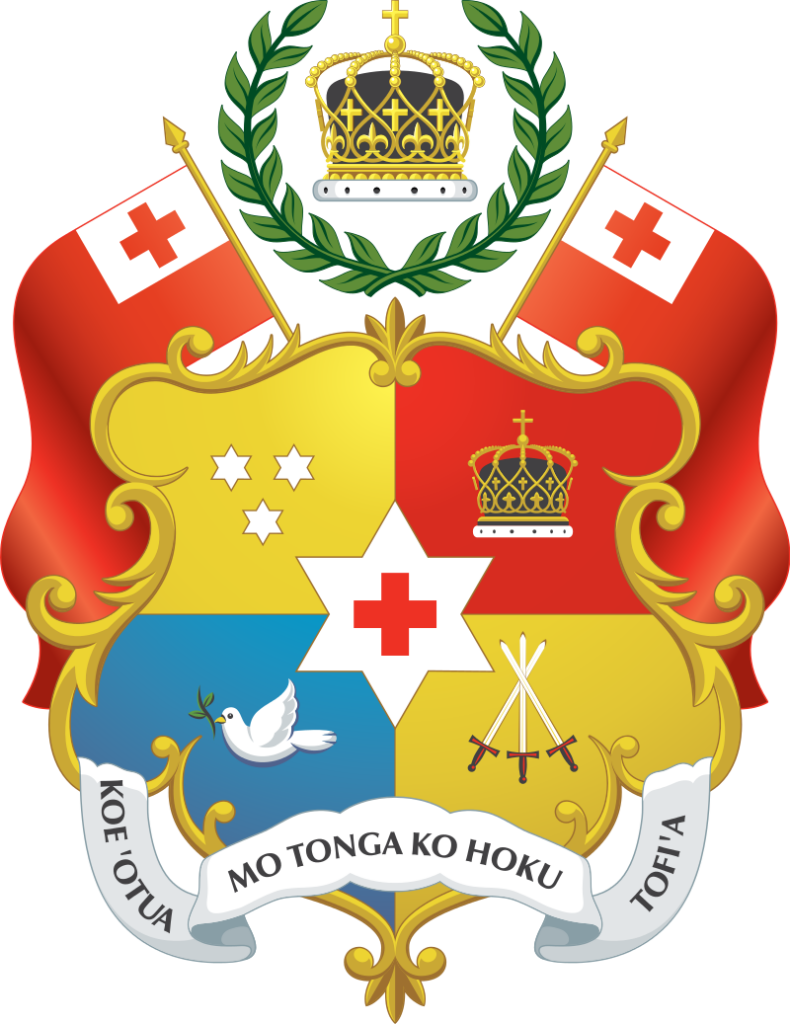
The Coat of Arms of Tonga, adopted in 1875, is a rich tapestry of symbols that encapsulate the essence and the guiding principles of the nation:
- Royal Crown: Positioned in the top-right quadrant and also making up the crest, the Royal Crown represents the monarchy, a pivotal institution in Tongan society that has guided the nation’s destiny throughout its history.
- Three Stars: These stars, located in the top-left quadrant, symbolize the main island groups of Tonga (Tongatapu, Haʻapai, and Vavaʻu), highlighting the geographical and political structure of the kingdom.
- Dove with Olive Branch: Featured in the bottom-left quadrant, this symbol is derived from the Biblical story of Noah and the Great Flood, representing the wish for God’s peace to prevail across the land.
- Three Crossed Swords: These swords in the bottom-right quadrant signify the three dynasties of the Tongan kings (Tuʻi Tonga, Tuʻi Haʻatakalaua, and the current Tuʻi Kanokupolu), denoting the historical lineage and the continuity of leadership within the kingdom.
- Motto: The motto “Ko e ʻOtua mo Tonga ko hoku Tofiʻa” (God and Tonga are my inheritance) encapsulates the core values of faith and allegiance to the nation and divine providence, underscoring the spiritual and patriotic fervor that defines Tongan society.
Each element of Tonga’s Coat of Arms is a testament to the nation’s history, beliefs, and aspirations, weaving a narrative of unity, faith, and royal heritage.
Historical Evolution and the Meaning Behind Changes
The flag of Tonga has undergone significant evolution in its design and symbolism, reflecting the nation’s history and cultural shifts.
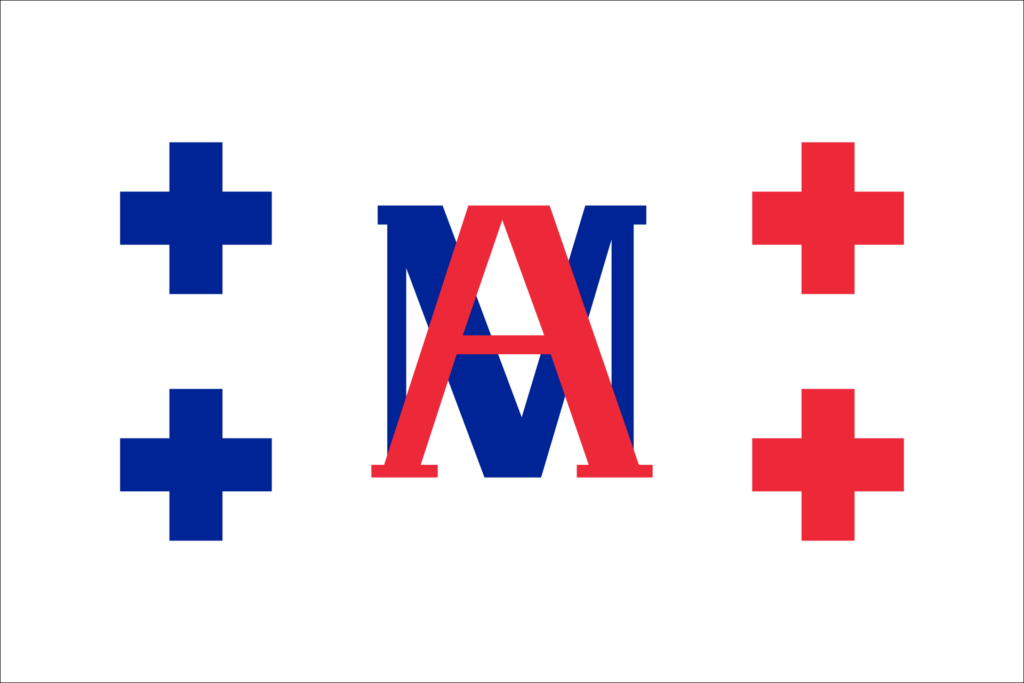
The first Tongan flag, adopted in the 1840s, was characterized by a white field with a cross at each corner and the letters “A” and “M” at the center, symbolizing the king.
King George Tupou I, upon ascending to the throne, sought to create a new flag that would more directly represent Tonga’s Christian faith and sovereignty. With the assistance of Shirley W. Baker, an Englishman who was a significant advisor to the king, a new flag was introduced in 1866.
This flag was codified in the Tongan constitution on November 4, 1875. The design was simplified to include a plain red field and a white canton with a red couped cross, a layout reminiscent of the British Red Ensign.
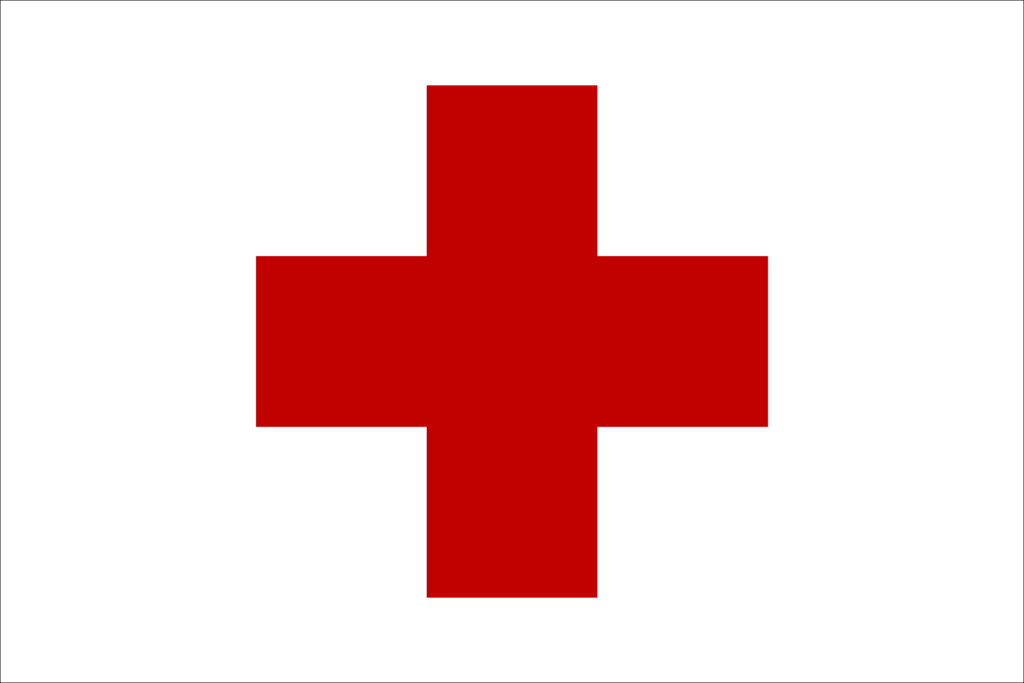
The transition from the initial flag design to the one adopted in 1875 marks Tonga’s efforts to solidify its national identity through symbols that resonate with the Tongan people’s spiritual beliefs and the country’s political sovereignty.
With its distinct Christian symbolism, the current flag’s design has been enshrined in the constitution to signify its permanent role as a national emblem, an evolution that illustrates the dynamic interplay between cultural influences, historical events, and the desire for a unifying national symbol.
Overall Symbolic Meaning of the Flag
The flag of Tonga symbolizes the nation’s core values and spiritual beliefs, serving as a beacon of identity and unity for its people. Its design encapsulates Tonga’s heritage and the principles that guide the nation, making it a profound emblem of national pride.
Similar Flags to the Flag of Tonga
The flag of Tonga shares similarities with a few other national flags due to common design elements or symbolic motifs, particularly the use of crosses and distinct color fields. Notable examples include:
Switzerland

The Swiss flag features a white cross on a red field. While the shape and placement of the cross differ, the symbolic use of the cross and the color contrast are reminiscent of Tonga’s flag.
The resemblance lies in the Christian symbolism the cross represents, though the specific designs reflect each nation’s unique historical and cultural context.
Denmark
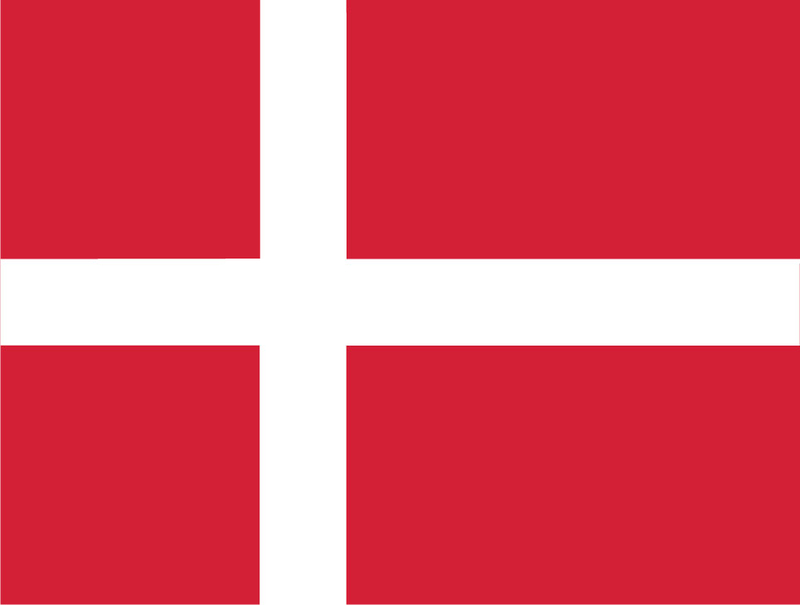
Known as the Dannebrog, Denmark’s flag has a white Scandinavian cross on a red field. The cross design connects to Christian symbolism, similar to Tonga’s flag. Although the layout and proportions differ, using a cross against a contrasting field highlights shared Christian heritage.
Georgia
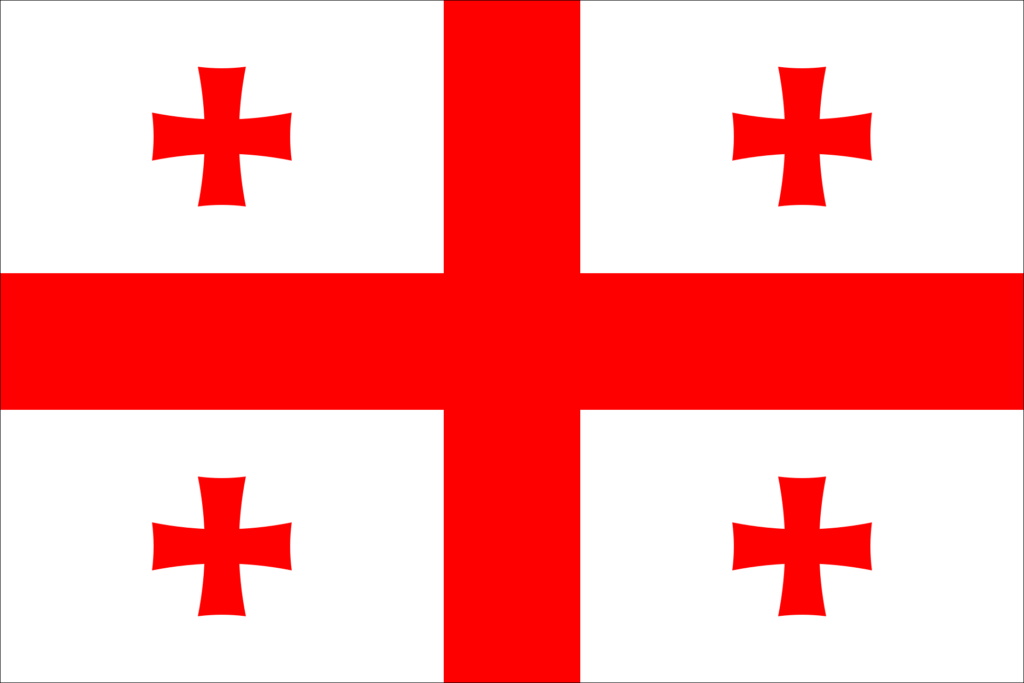
The Georgian flag features a large cross surrounded by four smaller crosses against a white background. Using the cross as a central motif creates a visual link to Tonga’s flag, emphasizing the Christian faith that plays a significant role in both nations’ identities.
Final Thoughts
The flag of Tonga symbolizes the nation’s core values and spiritual beliefs, serving as a beacon of identity and unity for its people. Its design encapsulates Tonga’s heritage and the principles that guide the nation, making it a profound emblem of national pride.
Image Sources and Copyright Information
- Tongan Flag on Pole Against Blue Sky: © Nick Thompson/Flickr | CC BY-SA 2.0 Generic